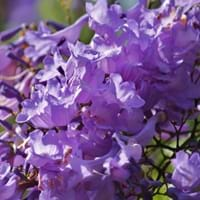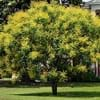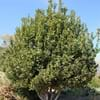Life Span
Perennial
Perennial
Types
Jacaranda mimosifolia, Jacaranda brasiliana
Not Available
Number of Varieties
Not Available
Habitat
along watercourse, Cold Regions, Grassland, River side
Dry Forest, hedge rows, open Woodlands, Shady Edge
USDA Hardiness Zone
10-12
8-15
AHS Heat Zone
12-9
12 - 1
Sunset Zone
H1, H2, 22, 23, 24
Not Available
Habit
Oval or Rounded
Clump-Forming
Minimum Width
Not Available
Flower Color
White, Lavender, Blue Violet
Not Available
Flower Color Modifier
Bicolor
Bicolor
Fruit Color
Brown
Not Available
Leaf Color in Spring
Green, Dark Green
Light Green, Dark Green
Leaf Color in Summer
Green, Dark Green
Light Green
Leaf Color in Fall
Green, Dark Green
Light Green, Dark Green
Leaf Color in Winter
Not Available
Light Green, Dark Green
Leaf Shape
feather-shaped
digitate
Plant Season
Spring
Spring, Summer, Fall, Winter
Sunlight
Full Sun
Full Sun, Partial Sun, Partial shade
Type of Soil
Loam, Sand
Loam, Sand
The pH of Soil
Neutral, Alkaline
Acidic, Neutral, Alkaline
Soil Drainage
Well drained
Average
Bloom Time
Early Spring, Spring, Late Spring
Not Available
Tolerances
Drought, Frost
Drought
Where to Plant?
Ground
Container, Ground
How to Plant?
Seedlings, Transplanting
Budding, From Rhizomes, Seedlings
Plant Maintenance
Low
Medium
Watering Requirements
Use Mulches to help prevent water loss during hot and windy weather, Water daily during growing season, Water more in summer
Average Water Needs
In Summer
Lots of watering
Lots of watering
In Spring
Moderate
Moderate
In Winter
Average Water
Average Water
Soil pH
Neutral, Alkaline
Acidic, Neutral, Alkaline
Soil Type
Loam, Sand
Loam, Sand
Soil Drainage Capacity
Well drained
Average
Sun Exposure
Full Sun
Full Sun, Partial Sun, Partial shade
Pruning
No pruning needed, Remove damaged leaves, Remove dead branches
No need to prune
Fertilizers
All-Purpose Liquid Fertilizer, Compost, fertilize in growing season, Fertilize the soil before planting
All-Purpose Liquid Fertilizer
Pests and Diseases
Aphids, Phytophthora, Red blotch, Root rot
Red blotch
Plant Tolerance
Drought
Cold climate, Drought, Heat Tolerance, Wet Site
Flower Petal Number
Single
Single
Foliage Texture
Fine
Medium
Foliage Sheen
Matte
Matte
Attracts
Bees, Birds, Butterflies, Hummingbirds
Butterflies
Allergy
allergic conjunctivitis, Dizziness, sneezing
Not Available
Aesthetic Uses
Beautification, Showy Purposes
Showy Purposes
Beauty Benefits
Acne, For treating wrinkles, Improve skin condition, Not Available, Skin inflammation
No Beauty Benefits
Environmental Uses
Nesting sites for birds, Shadow Tree
Air purification, Food for insects, Wildlife
Medicinal Uses
Acne, anti-allergy, Antibacterial, Antiseptic, Treating fever, Varicose veins
Not Available
Part of Plant Used
Bark, Fruits, Leaves
Stem, Tree trunks
Other Uses
Beneficial species for attracting pollinators, Used as firewood, Used as Ornamental plant
Economic Purpose, Traditional medicine, Used As Food, Used for woodware, Used in Furniture, Used in paper industry
Used As Indoor Plant
No
No
Used As Outdoor Plant
Yes
Yes
Garden Design
Feature Plant, Foundation, Mixed Border, Shade Trees, Tropical
Container, Feature Plant, Hedges, Screening / Wind Break, Tropical
Botanical Name
JACARANDA caerulea
BAMBUSA multiplex
Common Name
Cancer Tree, Caribbean Jacaranda, Green Ebony
Clumping Bamboo, Hedge Bamboo
In Hindi
Neeli Gulmohur
हेगड़े बांस
In German
Palisanderholzbaum
Hedge Bambus
In French
Flamboyant bleu
Bamboo Hedge
In Spanish
Jacaranda mimosifolia
bambú de cobertura
In Greek
Jacaranda mimosifolia
hedge Μπαμπού
In Portuguese
Jacarandá-mimoso
Bamboo Hedge
In Polish
Jakaranda mimozolistna
Żywopłoty Bamboo
In Latin
Jacaranda mimosifolia
Sepi Bamboo
Phylum
Magnoliophyta
Magnoliophyta
Class
Magnoliopsida
Liliopsida
Order
Scrophulariales
Cyperales
Family
Bignoniaceae
Poaceae
Clade
Asterids
Angiosperms, Commelinids, Monocots
Tribe
Not Available
Bambuseae
Subfamily
Not Available
Bambusoideae
Number of Species
Not Available
Season and Care of Jacaranda and Hedge Bamboo
Season and care of Jacaranda and Hedge Bamboo is important to know. While considering everything about Jacaranda and Hedge Bamboo Care, growing season is an essential factor. Jacaranda season is Spring and Hedge Bamboo season is Spring. The type of soil for Jacaranda is Loam, Sand and for Hedge Bamboo is Loam, Sand while the PH of soil for Jacaranda is Neutral, Alkaline and for Hedge Bamboo is Acidic, Neutral, Alkaline.
Jacaranda and Hedge Bamboo Physical Information
Jacaranda and Hedge Bamboo physical information is very important for comparison. Jacaranda height is 460.00 cm and width 610.00 cm whereas Hedge Bamboo height is 460.00 cm and width Not Available. The color specification of Jacaranda and Hedge Bamboo are as follows:
Jacaranda flower color: White, Lavender and Blue Violet
Jacaranda leaf color: Green and Dark Green
Hedge Bamboo flower color: Not Available
- Hedge Bamboo leaf color: Light Green and Dark Green
Care of Jacaranda and Hedge Bamboo
Care of Jacaranda and Hedge Bamboo include pruning, fertilizers, watering etc. Jacaranda pruning is done No pruning needed, Remove damaged leaves and Remove dead branches and Hedge Bamboo pruning is done No need to prune. In summer Jacaranda needs Lots of watering and in winter, it needs Average Water. Whereas, in summer Hedge Bamboo needs Lots of watering and in winter, it needs Average Water.





